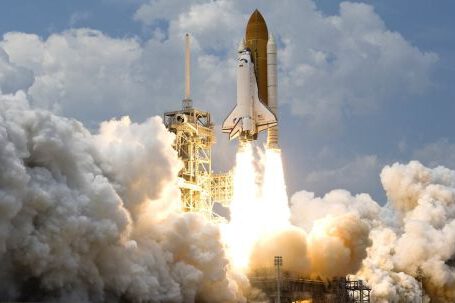In the vast expanse of the universe, where galaxies swirl and stars shimmer, one fundamental constant reigns supreme: the speed of light. Clocking in at an astonishing 299,792,458 meters per second, this cosmic speed limit has captivated the minds of scientists and philosophers for centuries. But why is the speed of light considered the ultimate speed limit? In this article, we will delve into the reasons behind this cosmic speed limit and explore the fascinating implications it holds for our understanding of the universe.
The Nature of Light
Before we can unravel the mysteries surrounding the speed of light, we must first understand the nature of light itself. Light, as we perceive it, is a form of electromagnetic radiation that travels in waves. These waves consist of electric and magnetic fields oscillating in harmony, propelling photons through space. It is through these photons that light carries energy and enables us to see the world around us.
Einstein’s Theory of Relativity
The foundation for our understanding of the speed of light as the ultimate speed limit lies in Albert Einstein’s groundbreaking theory of relativity. Published in 1905, this theory revolutionized our understanding of space, time, and the fundamental laws of physics. Einstein proposed that the speed of light is constant in a vacuum and is the same for all observers, regardless of their relative motion.
Cosmic Speed Limit
According to Einstein’s theory of relativity, nothing can travel faster than the speed of light. This cosmic speed limit is not merely a restriction on physical objects or particles but is deeply ingrained in the fabric of space and time itself. As an object approaches the speed of light, its mass increases exponentially, requiring an infinite amount of energy to accelerate it further. Therefore, any attempt to surpass the speed of light would violate the fundamental laws of physics as we currently understand them.
Implications for Space Travel
The speed of light being the ultimate speed limit has profound implications for the feasibility of interstellar travel. As we venture beyond our solar system and explore the vastness of the cosmos, the vast distances between stars and galaxies become apparent. Even at the speed of light, it would take thousands or even millions of years to reach these distant celestial bodies. The limitations imposed by the cosmic speed limit pose significant challenges for the dream of human exploration and colonization of other star systems.
Time Dilation and Causality
Another intriguing consequence of the speed of light being the ultimate speed limit is the phenomenon of time dilation. As an object approaches the speed of light, time slows down relative to a stationary observer. This dilation of time has been experimentally verified and has profound implications for our perception of time and the nature of causality. It suggests that events occurring at different speeds can have different chronological orderings, challenging our intuitive understanding of cause and effect.
The Search for Faster-Than-Light Travel
Despite the formidable limitations imposed by the speed of light, scientists and researchers continue to explore the possibility of faster-than-light travel. Concepts such as wormholes, warp drives, and tachyons have been proposed as potential avenues for surpassing the cosmic speed limit. However, these ideas remain purely speculative and have yet to be supported by empirical evidence. The speed of light continues to stand as the ultimate speed limit, at least within our current understanding of the laws of physics.
In conclusion, the speed of light is considered the ultimate speed limit due to its fundamental role in the fabric of space and time. Einstein’s theory of relativity provides the theoretical foundation for this cosmic speed limit, highlighting the profound implications it holds for our understanding of the universe. While the limitations imposed by the speed of light present significant challenges for space travel and our perception of time, they also inspire us to push the boundaries of our knowledge and explore the mysteries of the cosmos.





